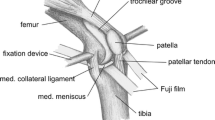Abstract.
This study was carried out to analyze the phasic heterogeneity in the function of the psoas major muscle (PMM) depending on the flexion angle at the hip joint. The study design was a passive kinetic experiment using 25 osteoligamentous specimens with the PMM tendon. We measured the flexion angle of the hip joint where the PMM tendon loses contact with the femoral head and pelvic surface. Ten osteoligamentous specimens were used for additional measurements of the tensile force and pressure exerted on the PMM and/or at the bone-tendon interface when the PMM tendon was gently pulled in line with the PMM origin in the supine position. The tension loading the PMM tendon was measured at seven different angled positions of hip joint flexion (0°, 15°, 30°, 45°, 60°, 75°, and 90°), using a load cell attached to a traction appliance. The pressure was measured at each of eight sites along the long axis of the PMM, using a pressure sensor. The PMM tendon lost contact with the femoral head at angled positions of 14° (average) hip flexion, and lost contact with the iliopectineal eminence at positions of 54° (average). The tension was stronger at angled positions of 0°–30° at the hip joint. The pressure on the femoral head and pelvic surface were stronger at positions of 0°–30° at the hip joint. The pressure on the femoral head was strongest at a hip flexion of 0°. The tensile force markedly decreased at 45°–60° flexion at the hip joint, while the pressure on the femoral head gradually reduced to zero in the same phases. We concluded that the PMM works phasically: (1) as an erector of the lumbar vertebral column, as well as a stabilizer of the femoral head in the acetabulum at 0°–15° flexion at the hip joint; (2) less as a stabilizer, in contrast to maintaining its erector action, at 15°–45°; and (3) as an effective flexor of the lower extremity, at 45°–60°.
Similar content being viewed by others
Author information
Authors and Affiliations
Additional information
Received: April 4, 2001 / Accepted: October 31, 2001
About this article
Cite this article
Yoshio, M., Murakami, G., Sato, T. et al. The function of the psoas major muscle: passive kinetics and morphological studies using donated cadavers. J Orthop Sci 7, 199–207 (2002). https://doi.org/10.1007/s007760200034
Published:
Issue Date:
DOI: https://doi.org/10.1007/s007760200034




